Full of color, festivities, and great food, Diwali (which is coming up on November 11) is one of my favorite Hindu holidays.
On the night of Diwali—a word derived from the Sanskrit for “light”—Hindu families clean up their houses, wear new clothes, and light diyas (little oil lamps) made of clay, brass, or silver.
When I was growing up, the diyas in our house were always lit with a wicker dipped in ghee, and we’d place them in the windows and stairways as decorations.
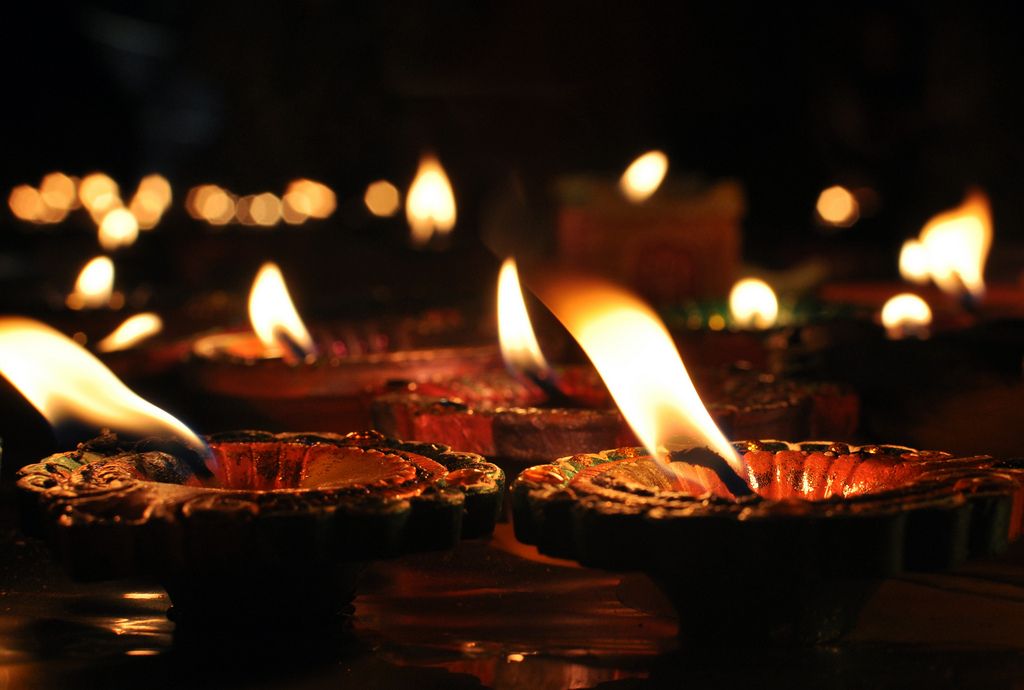
Image courtesy of Jasleen Kaur via Flickr
These lamps are used to welcome Lakshmi, the goddess of wealth and prosperity, who visits and blesses the homes. Diwali is also a celebration of the triumph of good over evil, when the God Ram returned with his family to his kingdom after defeating the demon Ravan, who had abducted Ram’s wife Sita.
After a puja (or prayer ceremony) is performed to welcome the gods, fireworks brighten the dark sky and a variety of traditional Indian dishes and sweets are served.
There are several delicious vegetarian foods served during Diwali, all of which are rich in flavor and taste. We eat deep-fried puris, potatoes cooked in a tomato broth, and channa masala.
But I love sweets and of all of them, I think laddus are the most important. Whenever people ask me to describe a laddu, I always tell them to think of it as a ball of sweet goodness. They're made by firmly molding the ingredients into a ball using the palms of your hand. Usually the fat of choice is ghee and a flavored sugar syrup is used to sweeten the ingredients, but this can vary greatly depending on the type of laddu being made.
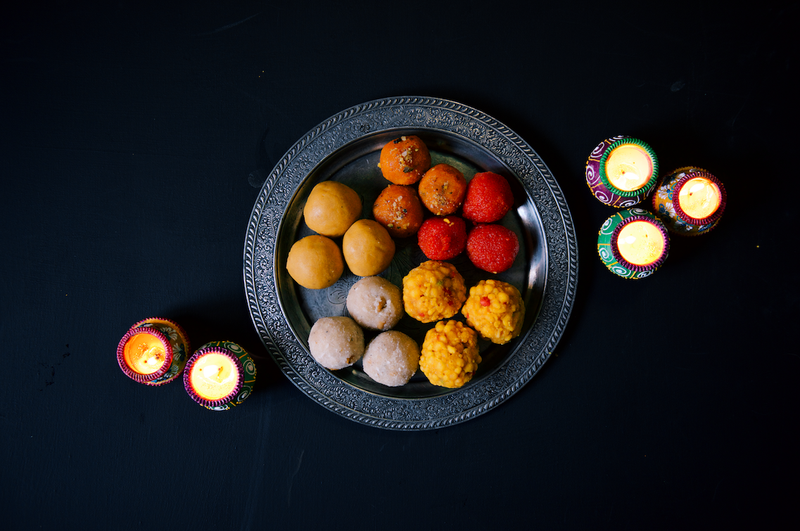
Laddus can be flavored with many different spices and ingredients, such as green cardamom, dried fruit, rose water, and nuts. It’s also common to find Western-influenced laddus made of chocolate and even coffee.
With such a huge range of laddu to choose from, I've figured out the kinds I love the most (and those that are not my favorite). Here are a few of the laddus I like best:
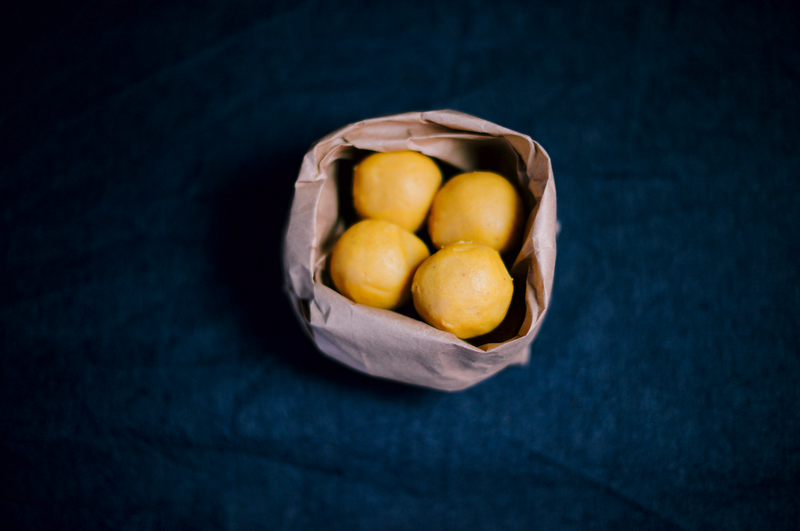
Chickpea (besan) laddu
-
Chickpea flour laddus (also known as besan laddus) are made by cooking chickpea flour with sugar and ghee. Green cardamom is usually added for flavoring, and the texture is creamy and soft.
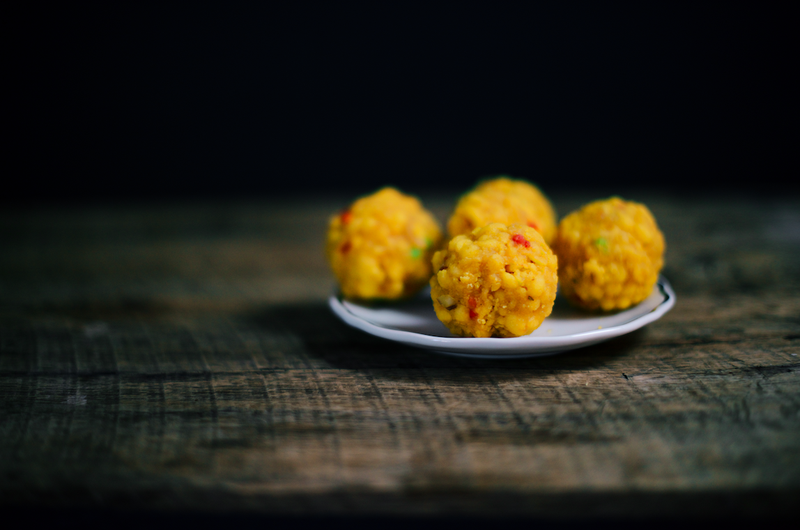
Crispy boondi laddu with mixed colors
- I’m a huge fan of boondi laddus because of the flavor and the texture. The word “boondi” in Hindi means a droplet of water, which refers to their shape. The chickpea flour-based batter is passed through a slotted spoon into a kadai (an Indian wok-shaped cooking vessel) of hot oil, which creates little droplets. The laddus are then sweetened in a sugar syrup that can be flavored with green cardamom, rose water, and even saffron.
Because boondi laddus are so popular, you'll see them at Indian sweet stores in a variety of colors, sizes, and textures. My favorite are decorated with crushed pistachios and saffron threads.

Boondi laddu with crushed pistachios and saffron
-
Rava laddus are made from toasted wheat semolina, which imparts a delicious nutty flavor. Just like besan laddus, they are usually spiked with green cardamom. It’s common to add cashews and dried golden raisins during their shaping process.
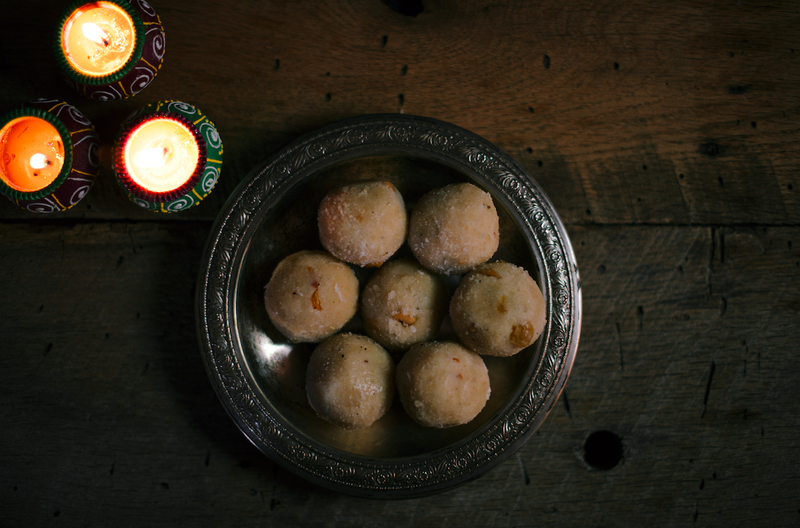
Rava (semolina) laddu with dried fruit and nuts
Chickpea Flour (Besan) Laddus
Makes about 12
1/4 cup plus 3 tablespoons ghee
1 cup chickpea flour, sifted
Seeds of 3 green cardamom pods, finely ground
1 cup confectioners' sugar
See the full recipe (and save and print it) here.

Photos by Nik Sharma unless otherwise specified









See what other Food52 readers are saying.